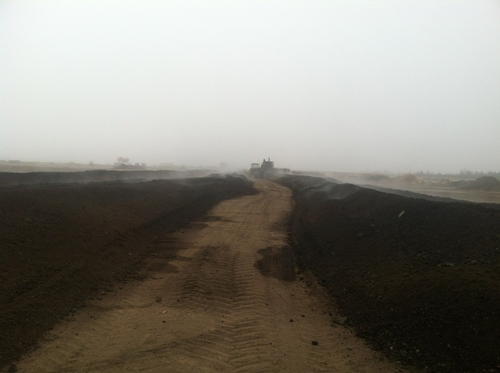Verticillium dahliae is the cause of Verticillium wilt, a disease that affects strawberries and many other plant species, including annual vegetables, fruit trees, nut trees and fiber crops, as well as weeds and native plants in California. Once a susceptible plant is infected, V. dahliae can produce large numbers of survival structures (called microsclerotia) (Vallad and Subbarao, 2008), which can survive in the soil for more than 14 years (Wilhelm, 1955). In addition, V. dahliae can colonize the roots of many crops that are not susceptible to disease and may show no symptoms (Lloyd and Gordon, 2011). This provides another means by which the fungus can produce survival structures. Verticillium dahliae is easily spread between fields with soil on farming equipment. It can also be introduced with seed (Wu and Subbarao, 2014) or infected transplants. Owing to the ease of dispersal, a wide host range and production of long-lived survival structures, V. dahliae is resident in agricultural soils throughout the state. Whether or not Verticillium wilt occurs in a particular situation is determined by the susceptibility of the crop variety being grown and the abundance of inoculum in soil. Consequently, the absence of disease does not mean the pathogen is not present. In fact, it is likely that V. dahliae occurs at some level in most fields in coastal California. Good management practices aim to keep the inoculum level below a damaging threshold (Gordon and Subbarao, 2007).
Many growers use compost amendments to improve the physical and chemical properties of soil. Compost can also enhance the activity of microorganisms that are inhibitory to plant pathogenic fungi (Mazzola, 2004). However, compost made from crop residue may include plants that were infected with V. dahliae, and because microsclerotia can survive in animal guts (Markakis, 2014), manure may be contaminated as well. Proper composting is required to ensure that no viable microsclerotia remain in the final product. The California Composting Council and CalRecycle have established regulations that require materials reach 55 °C (131°F) or higher for 15 days or longer with a minimum of five turnings of the windrow during this time (Cal Recycle, Title 14, Chapter 3.1), which should be sufficient to kill V. dahliae microsclerotia in manure or crop residue (Baker, 1957). All state permitted composting facilities are visited monthly by the local enforcement authority (LEA) to ensure compliance with these regulations. Consequently, if your supplier is operating under a state permit, the compost you purchase is unlikely to be a source of inoculum of V. dahliae, and it would not be advisable to forego the benefits of compost amendments out of concern that this will increase the risk of damage from Verticillium wilt.
REFERENCES
Cal Recycle. Title 14, Chapter 3.1. Composting Operations Regulatory Requirements, Article 5. Composting Operation and Facility Siting and Design Standards, Section 17868. 3. Pathogen Reduction. http://www.calrecycle.ca.gov/Laws/Regulations/title14/ch31a5.htm
Baker, KF and Roistacher, CN. 1957. Heat treatment of soil. In K.F. Baker [ed]. The U.C. system for producing healthy container-grown plants. Calif. Agr. Exp. Sta. Manual 23:123-137.
Gordon, TR and Subbarao, KV. 2007. Production Guidelines: Verticillium wilt of Strawberry. California Strawberry Commission, Issue 1: 1-4.
Lloyd, M and Gordon, TR. 2011. Evaluation of ten leguminous cover crops as cryptic hosts for Verticillium dahliae. Phytopathology 101: S109-S109.
Markakis, EA. et al. 2014. Survival, persistence and infection efficiency of Verticillium dahliae passed through the digestive system of sheep.Plant Disease, (ja).
Mazzola, M. 2004. Assessment and management of soil microbial community structure for disease suppression. Annual Review of Phytopathology 42: 35-59.
Vallad, GE and Subbarao, KV. 2008. Colonization of resistant and susceptible lettuce cultivars by a green fluorescent protein-tagged isolate of Verticillium dahliae. Phytopathology 98:871-885.
Wilhelm, S. 1955. Longevity of the Verticillium wilt fungus in the laboratory and field. Phytopathology 45:180-181.
Wu, B and Subbarao, KV. 2014. A model for multi-seasonal spread of Verticillium wilt of lettuce. Phytopathology 104:908-917.
Attached Images:
